According to You: The Best Starter Classics
Living in most car-centric parts of North America almost guarantees you an ample supply of vehicles for sale, and sometimes those vehicles can be considered classics. Many can be considered a “starter” classic for a budding enthusiast, but my suggested choice didn’t resonate with anyone. Perhaps there are too many cheap Ford Explorers where I live, and not enough vintage trucks/classic cars for the same prices.
But validation from others is not why the According To You series exists. Instead I choose to get the ball rolling, and let the Hagerty Community take it from there. And it clearly was a success, with great suggestions for starter classic vehicles from a variety of backgrounds. So let’s see how you answered the question.
First-Generation Mustang

@gerry: I think the 1st gen Mustang are a great place to start. There are plenty of units available, you can get a car from with a tree growing through the hood to a fully restored example, and everything in between for whatever your ability may be. Every part is readily available, there’s no searching for obscure parts.
@Mustang Kenny: I agree. They made so many that are still out there and many places make parts. And unlike newer cars that go down in value, classic cars go up in value so you get to enjoy your investment hands on.
@hyperv6: First gen Mustangs have been way under priced for years unless it was a Shleby.
@RichyRich: First gen Mustang…
BMW 2002
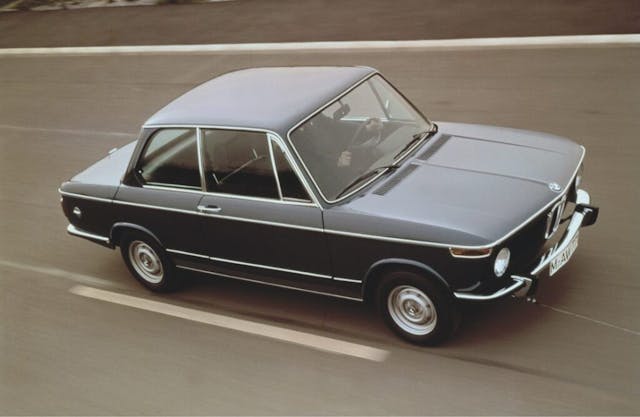
@David: For the first time owner of a classic, I would recommend cars that sold well when new, so there are plenty of examples from which to choose, so you’re not forced into picking something beyond your skills. This also leads to cars that with well-supported parts networks and active owner groups in virtually every part of the country. Mustangs, Camaros, Chevelles, Volkswagens and any number of pickups from Chevy and Ford. Did I follow my own advice?
No. I chose a BMW 2002, which is isn’t a BAD choice, but not the best choice.
@Ken: BMW 2002 is a great choice, IMO. Parts are still readily available and its easy to work on. It has the classic look, and it was my first classic as well.
@Stu: Those are great cars. Plenty of them are in Southern California.
Any(?) Truck With A Good Frame
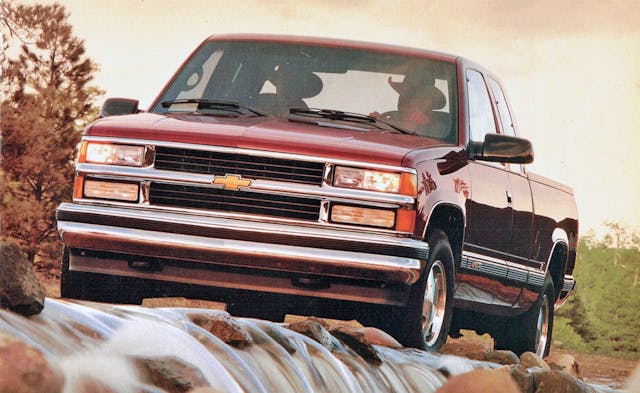
@hyperv6: The one to do is a truck. Ford or more so a Chevy. if you have a good frame you can buy about any needed part to restore one. The engines were made in the millions per year not in total. The best part is a well restored truck can bring a good profit as they are selling well once restored.
Most Camaro, Mustangs and Chevelles are priced out of reach anymore. Rusted shells can go for $10K. Find a basic truck on a farm and restore it, the 1960-1970’s examples are prime right now for restoration parts. The profit made on this can be applied to a better car at the next level.
@snailish: Truck is the entry-level answer all day long. Where I live the 60s trucks (especially GM) are now really pricey and the 70s are starting to catch up. If you can snag a good one at a decent price do it. Hagerty likes the term Radwood for anything 90s, and this is the sweet spot of hobby entry point.
While you still will see the odd GMT400 truck being used as a beater work truck they are declining fast. Prices on pristine ones in sought after specs (454 SS, shortbox 4×4, etc.) are rising but generally not yet out of reach. 90s trucks are a nice blend of modern/archaic. They made millions of them and they are hitting the bottom of depreciation curve. Modern mechanics have worked on them (unless it’s a really new mechanic at a dealership I suppose). They aren’t giant bloated things, yet they exceed most users truck needs for 99% of the things you want to do (if you need a heavy-duty towing rig –buy a 3500).
@Glenn: Any GM truck from 1973-87 (Square Body) or the C/K series from ’88-97. Easy to work on, and parts availability both new and used, is great. I did a mild refresh on a ’92 long bed a few years ago and was amazed at how easy it was to work on.
C5 Corvette
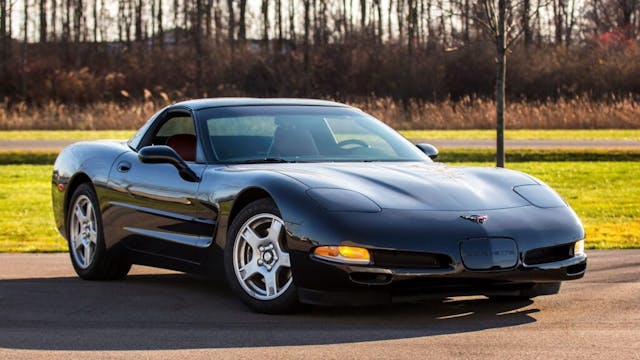
@MeJ: I’ll vote a C5 Corvette. They are reasonably affordable, easy to maintain, mod, and enjoy. I believe these actually will be considered “classic” one day.
@hyperv6: As a owner of a C5 I will agree. They are the performance bargain right now. as a low mile car can still be had cheap. You may never get split window Corvette money for a C5 since there are so many, but if in good condition they will maintain and grow some value as time goes on.
BMW 3 Series
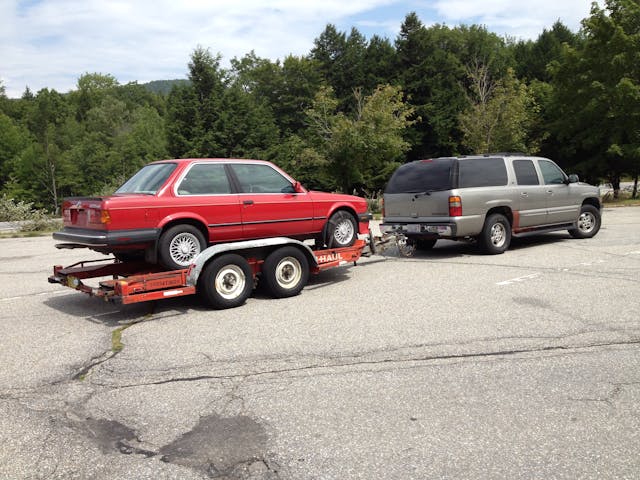
@TG: 3 Series Beemer. You can get them at throw-away car prices, and there are plenty of parts for them. Not the easiest things to work on, but most starter collectors aren’t going to get into serious engine work anyway.
MGB
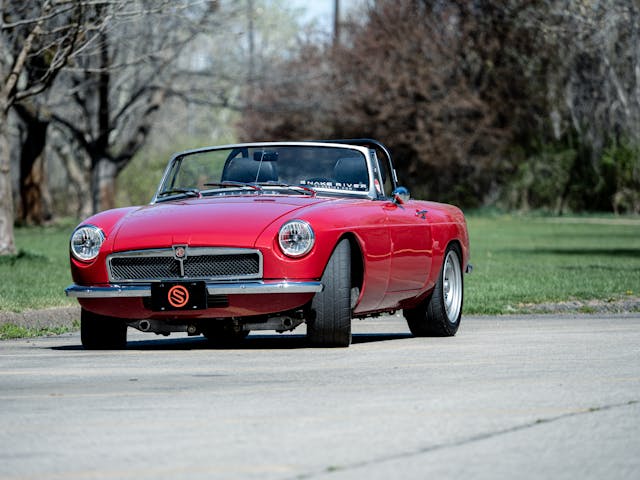
@MGWrench: I think it depends on the purpose of your starter classic. If you want to start a collection, but you’re not interested in maintaining it, then buy the best example you can afford of the car that excites you the most and enjoy.
If you want to learn how to restore and maintain a classic car, then I would recommend an MGB or MGB-GT. They are simple cars that are still affordable and with care can be reliable drivers, but the rules that must be adhered to are: 1. Make sure you keep oil in the carburetor dampers, and 2. Most carburetor problems are actually ignition, so install an electronic points replacement.
C4 Corvette
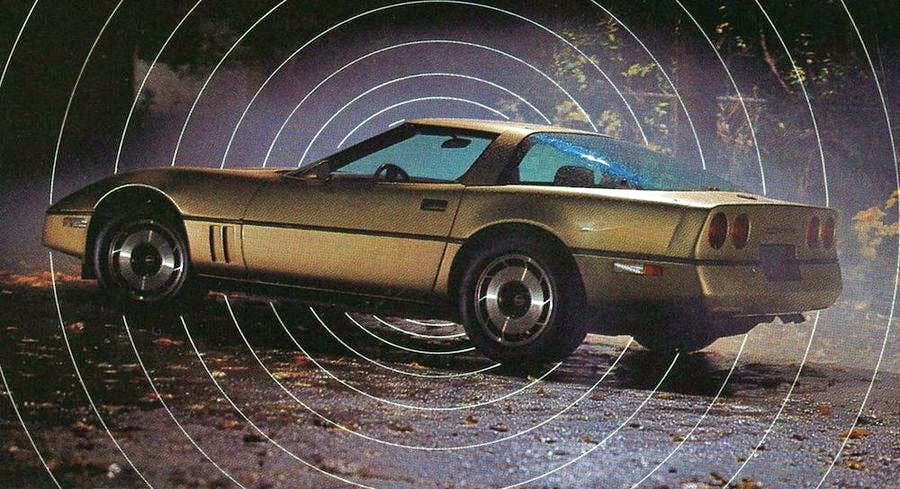
@Vehicle Nanny: If performance is your desire, I recommend a C4 Corvette (1986 or newer). The digital dash is not the nightmare some might think. Even 20 years ago I was able to fix mine for about $50 (and this was before YouTube!).
Tri-Five Chevy
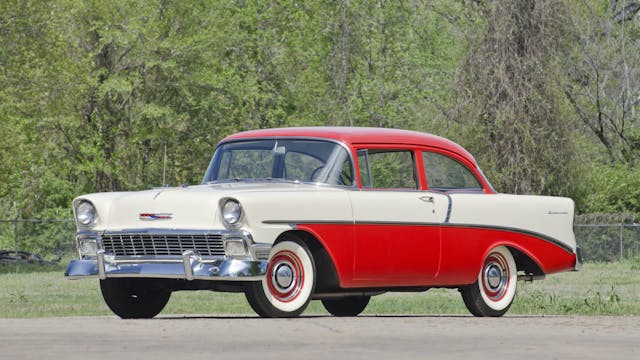
@Bob: I would tell them to start with a Tri-Five Chevrolet, 2 door. All parts are available, so find one that has the least amount of rust (they all have some rust) do not worry about the drivetrain. Do all your own work, the internet is full of advice, IMO.
Volvo 122

@JH: Volvo 122 series hands down! I am thinking of youth, or young adults, and a good starter classic that is durable, financially accessible, easy to work on, enough manufactured to have a good parts supply but still rare enough to seem unique, and a safe and fun car to drive! The Volvo 122 can be restored, modified to rally specifications, or built as a daily driver.
When built to rally specifications, the Volvo cars were a worthy match for many of the other cars of their era. The Volvo 122 is far easier to work on with better parts availability and less expensive to acquire and maintain than many of the vehicles mentioned earlier.
Supercharged GM W-body

@Dave: If you can find one, get a 1997 to 02 Buick Regal GS. It’s a supercharged, 240 HP sleeper with the bulletproof 3.8 V6. I did a quick search and found one in pristine condition, 64k miles, asking price $6,995.
@Sajeev Mehta: Fantastic choice! I’d add all of the Regal’s W-body supercharged brothers from Chevrolet and Pontiac, as they all have great performance with dirt cheap replacement parts.
Volvo 240

@Howard: Volvo 240, especially a later model. Not sexy or quick, but younger people appreciate the cool factor of the quirkiness.
Chevrolet Corvair
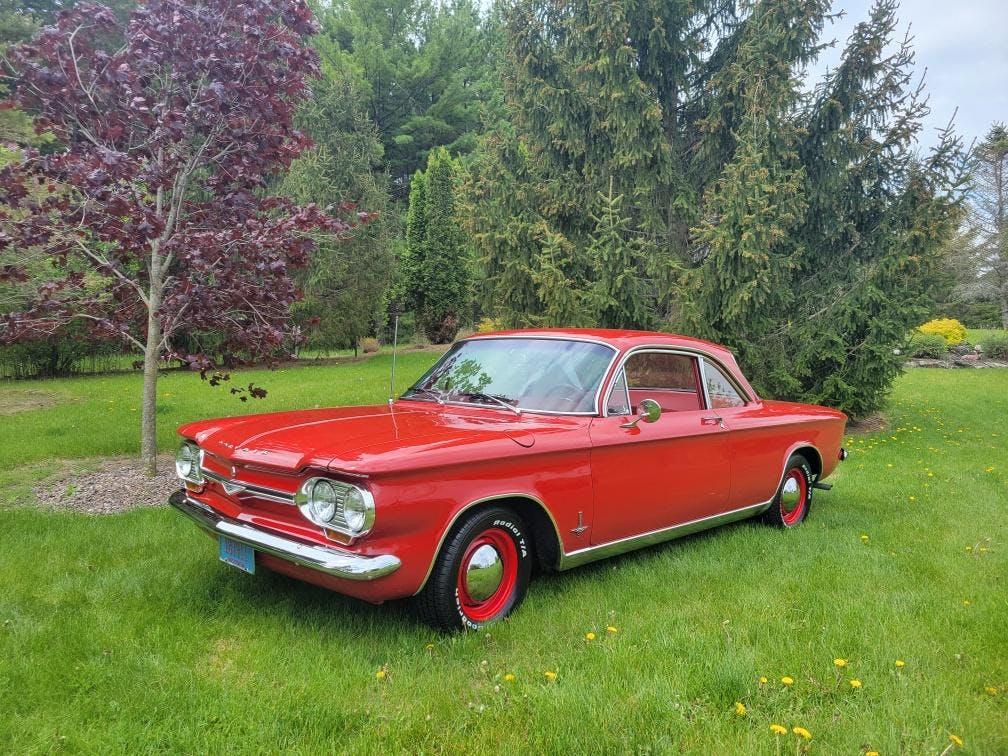
@Paul: If you want something a bit different look at a Corvair. They’re still relatively inexpensive to own and restore. There are Corvairs for every taste. There are cars of all kinds plus trucks if you like. They’re still competitive in vintage racing as well as great cruisers. Parts are fairly easy to source and they’re not too complicated for a beginner. There are tons of info about them as well.
Mercedes-Benz 280 SL
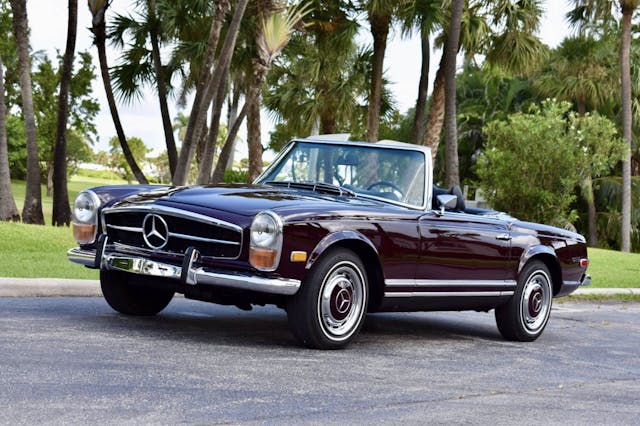
@Ramsey: Mercedes-Benz 280SL! Reliable, respected, readily available support, and almost always the same value when you’re selling as when you’re buying!
Ford Model A
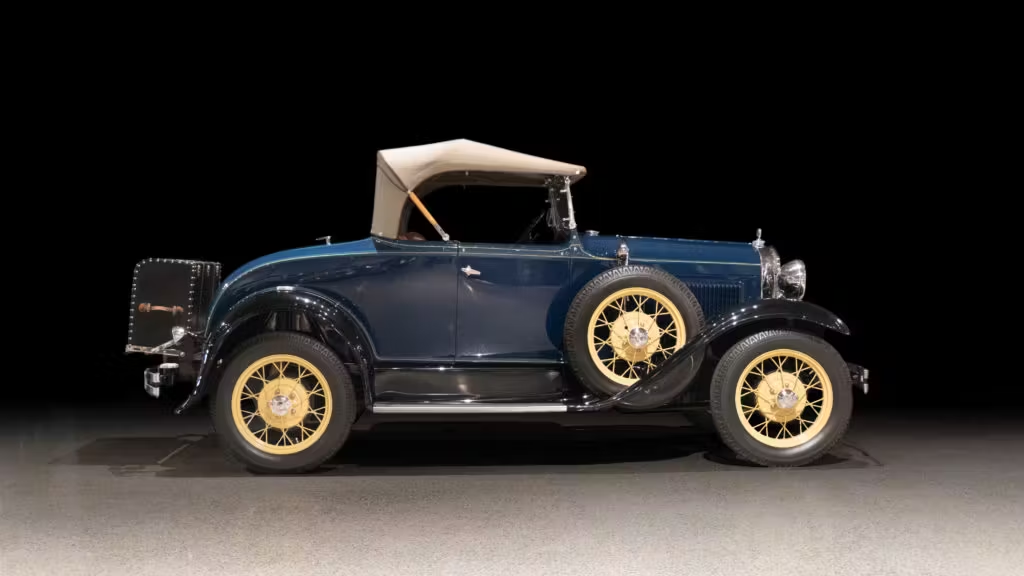
@Jim: I will take a slightly different tack with this question. First, the key words here are “first” and “classic.” In that context, I suggest a first classic should be something designed for the person who is actually entering our world but has little to no experience with either cars or mechanical work in general.
My suggestion is then a bit off the wall: I recommend a Model A Ford, for the following reasons. They are plentiful; Henry literally made millions and a satisfying number are still out there. They are dirt simple. Model As are a wonderful basis for a person to really learn the fundamentals of how cars work. A copy of Martin Stockel’s book on automotive fundamentals and repair (first or second edition is recommended) is an excellent basic handbook for the newbie. A Model A specific book will be invaluable as well. The whole industry that we depend on for maintaining and restoring our classics today was founded on the maintenance, repair and restoration of Henry’s early cars. There is an enormous support for Model A parts and services. The cars themselves are not outrageously expensive, unlike more modern vehicles. Check out a current Hemmings listing for the Model A. Many are available from professionally restored trophy winners down to the bring a trailer category.
I suggest the new person look for a car that has been previously restored, several years ago, and preferably a home shop amateur job. These are amazingly cheap when compared against most other candidates. It will be something that can be repaired fairly easily, is not too expensive, and with simple tools can be repaired or rebuilt easily. By seeking out a previously home brewed restoration, the newbie will get something useful, will be inclined to use it around town and will usually be close to home if some “unscheduled” maintenance is needed. The qualities of simplicity found in the Model A will provide the new person everything needed to learn automotive fundamentals and enjoy a first classic without breaking the bank. Finally, when it is time to sell there will be a ready market for the history and entertainment the Model A represents.
@Septuagenarian Classic Enthusiast: Congratulations are in order, as this is the best answer to the question as stated in the title of the article. I agree completely. Well done Jim!
***
Check out the Hagerty Media homepage so you don’t miss a single story, or better yet, bookmark it. To get our best stories delivered right to your inbox, subscribe to our newsletters.
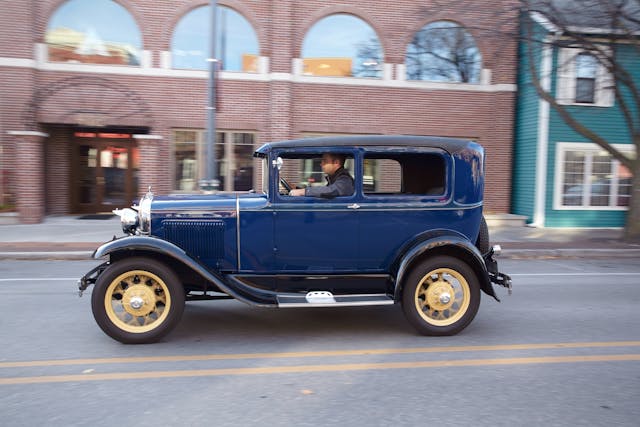


I guess we have different ideas of what a starter collector vehicle is. To me it’s in the $5-15k range and while some of these you can get there, but many of them are way out of reach. The 280SL is out of the league of 99% of collectors with most going for 6 figures.
Is it really that hard to believe someone might make their money before buying a vintage car? Not everyone starts with $0 at 13 years old. Some focus on other aspects of life other than cars for awhile and then come back after accomplishing other things and are “starting” in the old car hobby with a stack of cash, space, and time, but not mechanical skills nor the desire to learn them.
Those enthusiasts are just as important as your or I, whether you want to believe it or not.
How funny that this older article resurfaced now. I found my old answer in the article recommending an 88-97 Chevy truck. Flash forward to today, and I just picked up a ’96 Chevy short bed, regular cab for my son and I to restore for his first car. He’s 13 now, so we have a couple of summers to get it going.
Some answers are truly timeless!
A $100,000 SL a “starter classic”?
Maybe if you got a new 911 as a high school graduation present, but in t I n my neighborhood.
About the tri-fives…I’m not sure anyone young enough to be looking for a ” starter” would find them fun to drive. By modern steering and brake standards, they are barely adequate and less fun than any one of a number of older modern cars. They might find an old Civic more rewarding.
Early Mustang, again a great starter classic. Performance is above the Tri fives, but of course well below current standards, but at least they look more sporty than the Chevys.
Pickups are great, but a new buyer has to go into them with an open mindset.
MGBs are fun, but for the same money, or less, I’d rather have a much more reliable Miata. The long suffering UK sports car owners didn’t get to be a stereotype because they weren’t true. Go to any UK club event and suffering is alive and well…even among the knowledgeable long term owners. A newbie to the hobby would likely leave the hobby after putting up with the eccentricities after awhile.
Who told you everyone starting in this hobby is young? Plenty of people only get into vintage cars later in life.
Beemers are motorcycles. Bimmers are cars
If anybody in authority had some intelligence they would fire the author. He tries to promote a Corvair as a good investment for someone starting out with a classic Corvair. Let me guess, he owns one. Oh yes, the white Corvair that must have had it’s picture in 30 of his articles. My message to him is get our of your garage and report on some real classics. Most of the cars in this article don’t qualify as classics in my book.
I have a 2004 Intimidator Monte Carlo. It was my daily driver for 11 years but now is a leisure ride. It’s deceptively quick, handles well and is comfortable. The Earnhardt edition has every factory option from that year. Most parts are immediately available although some parts have needed to come from a regional distribution center overnight. The cooling system is different (hoses, water pump) because of the supercharger.
I got my son started with an 84 AMC Jeep. One belt on the front of the motor, it went around the crank pulley, the water pump, and the alternator. Price was right. Parts are everywhere. Easy to work on and fun to drive slow.
The MGB, my first dream car and I’ve owned 3 over 52 years, the last one for 45 years, my first car, a Volvo 122S, great car, safe and reliable and if I could find one in great shape I’d consider having one again. My second dream car but not yet attained due to the high prices and rarity of manual transmission versions, the Mercedes 280SL. A beauty while not quite as sporty as an MGB a great classic with timeless beauty.
This is my first entry to Hagerty’s ‘comment’ articles.
As a vintage car owner a few times over (’60 Triumph TR3 – ’68 250 SL – and now a ’66 Ferrari 330 GTC ) all of which I’ve done mostly all wrenchin’ on, I was fortunate enough to learn from observing and assisting others
who made the plunge on a ‘classic’.
It is my understanding that a ‘classic’ is an automobile of earlier notoriety – and a ‘vintage’ is classified as one
of 20 – 25 years and older (vignt – french # for 20). The two can be the same, due to the interchangeability of
describing an older vehicle.
Please! Whichever term is used, pay heed to the content of the article. It was well written and appreciated.
As a footnote, some of these cars ARE out of the realm of affordability, but are great rides. Semantics
in these articles isn’t necessary.
All I can say is I wish I still had either of the two Beetles, a 58 (full German) and 63. Easy to work on, easy to drive, and just plain old fun (especially when you go all out jumping over a humped railroad crossing 😂).
Some of these are just silly. I mean go try to find an affordable Tri-Five Chevy! The 380SL also. Others make some sense, like pick-ups. A C4 Corvette is a better value than a C5 though. ANY of the 60s compacts (Chevy II, Novas, Tempest, Skylark, Falcon, etc.) are easy to work on and still affordable. Some, like the late 50s/early 60s independents (Rambler and Studebaker) are harder to find parts for, but that’s part of the allure — anyone can build a Mustang from a parts catalog, you have to learn where to look and do some searching for rarer parts for those… and some you have to modify something else to fit. It costs more for a 100% restoration on one of those due to a few really rare parts, but to “fix up” for a driver or hot-rod the initial cost is less due to lower popularity. Popularity drives prices, not rarity! If you have the only remaining example of a car and no one wants it what’s it worth? Not much. When popularity and rarity come together (like a Hemi Cuda or 69 Camaro SS/RS) is when prices sky rocket.
VW are dirt cheap (even in CANADA) and they easy to work on + almost anything is available as body parts
To me it’s an excellent entry for a beginner hobbyist that want to get into is first restoration project
Without spend a million dollar…
If you make a mistake you will always find other parts
Wonder if there’s any market for a 280SL replica (done right, of course)? Something like the Factory Five Cobra replicas, modern engines and running gear, wouldn’t cost a king’s ransom to build. Besides, if I had another 280SL (which is nice to think about, but once was quite enough, thank you very much), I’d be scared to drive a six figure car anywhere – too many maniacs and morons out there . . . when the only vehicle that can survive a WalMart parking lot is a Bradley (and keep the gun for driving on I-4, you’ll need it), why would I take something nice there and get it destroyed?
Pretty much any Studebaker Lark. They come in all flavours from economical 6cyl w/3spd OD trannies to Corvette eating monsters with 300+ hp supercharged V8’s in a 3000lb car. You can even find them with factory SBC V8’s. I had one of those and swapping the 283 for a 350hp 350 chebby engine was a breeze.
I have a 2001 Park Ave Ultra. Fast, quiet, safe and bulletproof. Mine is rustproofed and used only in the summer. Once the intake gaskets and coolant elbows are sorted, the car is a joy. A fast living room on wheels and I routinely see 32 MPG on the interstate